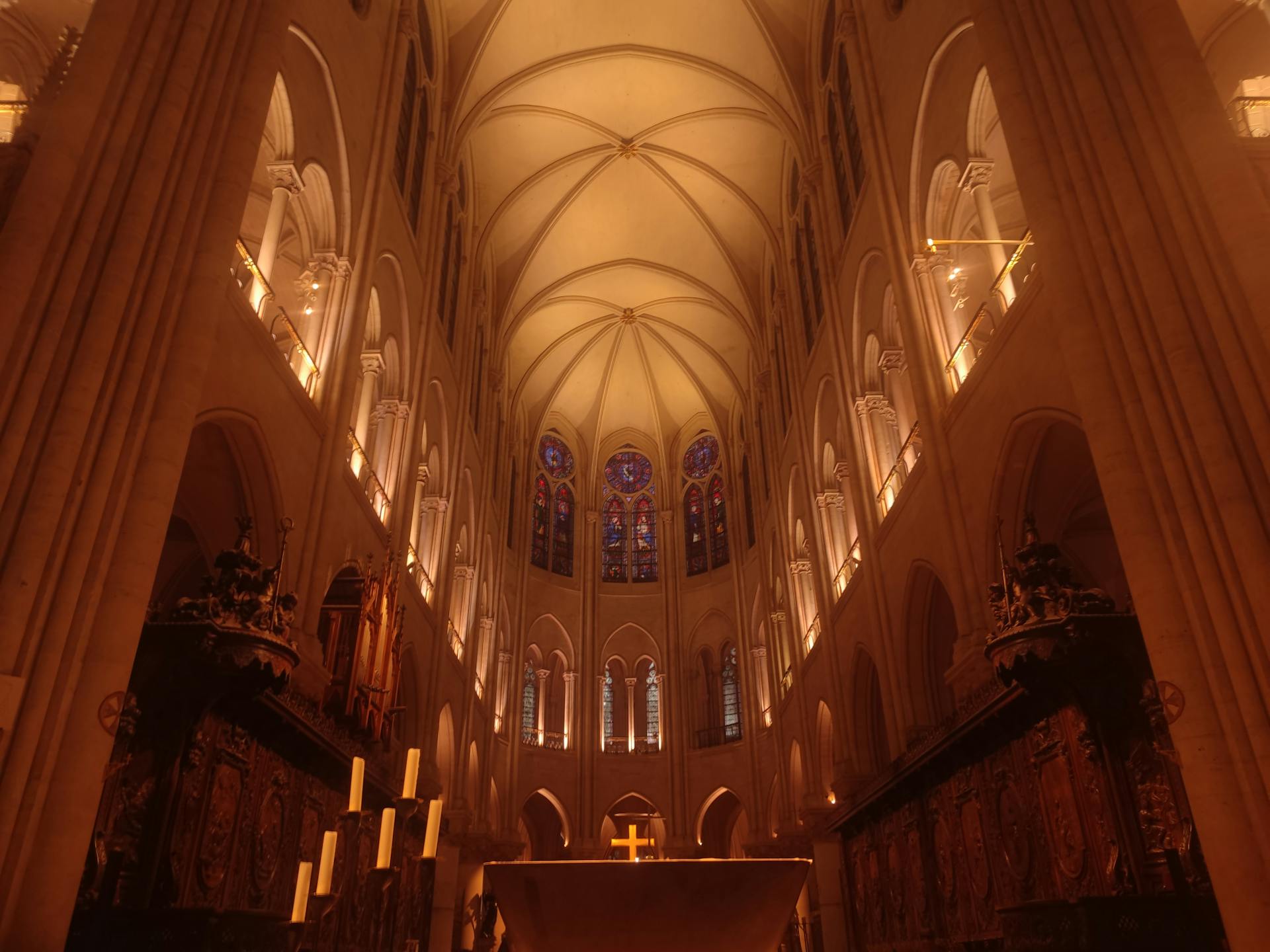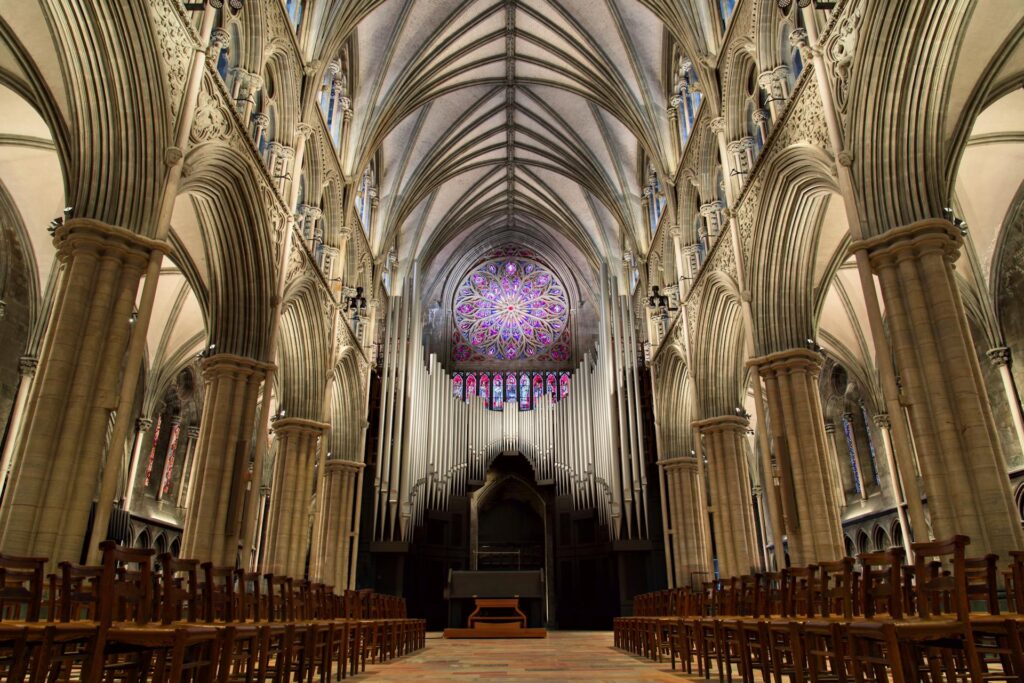Have you ever walked into a space and felt something shift inside you? Maybe it was a sense of calm, a feeling of awe, or even a touch of reverence. This is the magic of sacred spaces. They have a unique way of speaking to our souls, shaping our emotions, and offering us a sanctuary from the chaos of everyday life. But how exactly do these sacred spaces manage to evoke such profound emotions? Let’s dive into the fascinating world of architecture and emotion to uncover the secrets behind these awe-inspiring places.
The Essence of Sacred Spaces
Sacred spaces are more than just buildings; they’re vessels of emotion and meaning. These spaces are meticulously designed to create an atmosphere that transcends the ordinary. They often combine elements like light, sound, and material to evoke a specific emotional response. For instance, the use of natural light filtering through stained glass can create a sense of tranquility and reverence. The intentional design of acoustics can amplify the experience of a whispered prayer or a choir’s harmonious chant, enveloping visitors in a cocoon of sound that resonates deep within.
When we talk about sacred spaces, we’re often referring to places like churches, temples, mosques, and even natural sites that inspire spiritual reflection. These spaces are intentionally crafted to guide our emotions and connect us to something greater than ourselves. The architecture of these places is not just about aesthetics; it’s about crafting an experience that touches the human spirit. This is why sacred spaces have a universal appeal, transcending cultural and religious boundaries to connect with people on a deeply personal level.
Historical Significance and Emotional Impact
Sacred spaces have been an integral part of human history, serving as focal points for community gatherings, spiritual practices, and personal reflection. Throughout history, these spaces have been designed to evoke specific emotions and foster a sense of connection among individuals. Take, for example, the awe-inspiring Gothic cathedrals of Europe. Their towering spires and intricate stained glass windows were designed to lead the gaze heavenward, inspiring a sense of awe and wonder in all who entered.
The emotional impact of sacred spaces is not limited to grand cathedrals or ancient temples. Even small, intimate spaces can have a profound effect on our emotions. A simple meditation room or a quiet garden can serve as a sacred space, offering solace and peace to those who seek it. The key lies in the intentional design and purpose of the space, which work together to create an environment that nurtures the soul and fosters emotional well-being.
Architectural Elements That Evoke Emotion
The architecture of sacred spaces is a delicate balance of form and function, with each element carefully chosen to evoke a specific emotional response. From the soaring arches of a cathedral to the serene simplicity of a Zen garden, every detail plays a role in shaping the overall experience. One of the most powerful elements is light. Natural light, when harnessed effectively, can create a sense of warmth and openness, drawing visitors into a space and inviting them to linger.
Materials also play a crucial role in the emotional impact of sacred spaces. The use of natural materials like wood, stone, and even water can create a sense of harmony and balance, grounding visitors and connecting them to the earth. The texture and color of these materials can evoke emotions ranging from serenity to reverence, enhancing the overall experience and deepening the connection between the space and its visitors.
The Role of Sound in Sacred Spaces
Sound is an often-overlooked element in the design of sacred spaces, yet it has a profound impact on our emotions. The acoustics of a space can amplify the spiritual experience, with sounds like a choir’s song or the gentle rustle of leaves contributing to the overall atmosphere. In many sacred spaces, sound is used intentionally to create a sense of calm and focus, helping visitors enter a meditative or prayerful state.
The intentional use of sound can also serve to enhance the communal experience within sacred spaces. The echoes of a shared chant or the resonance of a bell can create a sense of unity and connection among those present, fostering a sense of belonging and shared purpose. This communal aspect is a key component of sacred spaces, as it helps to build emotional bonds and strengthen the sense of community among visitors.
Sacred Spaces as Sanctuaries
In today’s fast-paced world, sacred spaces serve as sanctuaries where individuals can escape the noise and chaos of everyday life. These spaces offer a refuge for reflection, prayer, and meditation, providing a much-needed respite for the soul. The design of sacred spaces is often centered around creating an environment of peace and tranquility, where visitors can find solace and rejuvenation.
The calming effect of sacred spaces can be attributed to their intentional design, which often incorporates elements like flowing water, lush greenery, and quiet corners for contemplation. These features work together to create an atmosphere of serenity and balance, allowing visitors to unwind and reconnect with themselves and their spirituality. In this way, sacred spaces serve as a vital resource for emotional well-being, offering a safe haven for introspection and healing.

Emotional Connection Through Design
The design of sacred spaces is deeply connected to the emotions they evoke. Architects and designers often draw upon cultural and religious symbolism to create spaces that resonate with visitors on a personal level. This emotional connection is fostered through the careful selection of design elements that align with the beliefs and values of the community the space serves.
For example, the use of specific symbols and motifs can evoke a sense of familiarity and comfort, reinforcing the spiritual significance of the space. The intentional design of these elements helps to create a sense of continuity and connection, linking the past with the present and fostering a sense of belonging among visitors. This emotional connection is a key aspect of the power of sacred spaces, as it helps to create a lasting impact on those who experience them.
Modern Interpretations of Sacred Spaces
Today, the concept of sacred spaces is evolving to include a wider range of environments that cater to diverse needs and preferences. Modern interpretations of sacred spaces often incorporate contemporary design elements while still maintaining the core principles of emotional connection and spiritual reflection. These spaces may be found in urban centers, integrating nature and tranquility into the bustling cityscape.
Incorporating elements like sustainable materials, innovative lighting, and modern technology, these new sacred spaces offer a fresh take on traditional concepts while still providing a sanctuary for the soul. By blending the old with the new, architects and designers are creating spaces that resonate with today’s diverse and dynamic communities, ensuring that the power of sacred spaces continues to be a vital part of our lives.
The Universal Appeal of Sacred Spaces
Sacred spaces have a universal appeal that transcends cultural and religious boundaries, drawing people from all walks of life. This appeal lies in the ability of these spaces to evoke a sense of wonder and awe, connecting visitors to something greater than themselves. Whether through the grandeur of a cathedral or the simplicity of a meditation garden, sacred spaces offer a unique experience that speaks to the human spirit.
The universal nature of sacred spaces is a testament to their enduring power and significance. By creating environments that foster emotional connection and spiritual reflection, these spaces continue to serve as vital resources for individuals seeking solace, inspiration, and connection. In this way, sacred spaces play a crucial role in shaping our emotional landscapes and enriching our lives.
Sacred Spaces and Community
Sacred spaces are not only places for personal reflection but also serve as vital centers for community gathering and connection. They provide a shared environment where individuals can come together to celebrate, mourn, and support one another through life’s journey. These communal aspects of sacred spaces help to build strong emotional bonds within communities, fostering a sense of belonging and shared purpose.
The communal nature of sacred spaces is often reflected in their design, with features like open gathering areas, communal seating, and spaces for group activities. These elements encourage interaction and collaboration, strengthening the sense of community and reinforcing the emotional connections that are so integral to the experience of sacred spaces. By providing a space for community connection, sacred spaces play a vital role in nurturing emotional well-being and fostering a sense of unity among individuals.
The Future of Sacred Spaces
As our world continues to evolve, so too does the concept of sacred spaces. Future sacred spaces are likely to continue embracing diversity and innovation, incorporating new technologies and design principles to create environments that resonate with contemporary society. These spaces may explore new ways of integrating nature, technology, and sustainable design to create more inclusive and accessible environments.
The future of sacred spaces will likely see a continued emphasis on creating environments that foster emotional connection and spiritual reflection, while also embracing the changing needs and preferences of today’s diverse communities. By remaining adaptable and forward-thinking, sacred spaces will continue to serve as vital resources for individuals seeking solace, inspiration, and connection in an ever-changing world.
Conclusion
Sacred spaces hold a special place in our hearts and minds, offering a refuge for reflection, connection, and emotional healing. Through their intentional design and powerful symbolism, these spaces shape our emotions and connect us to something greater than ourselves. As we continue to explore and reinterpret the concept of sacred spaces, their enduring power and significance will remain a vital part of our lives, providing a sanctuary for the soul in an ever-changing world.

Recent Posts
15 Floor Plan Graphic Styles That Will Elevate Your Presentation Game
The Role of Shadows in Architectural Storytelling
When Furniture Becomes Architecture: Blurring the Line